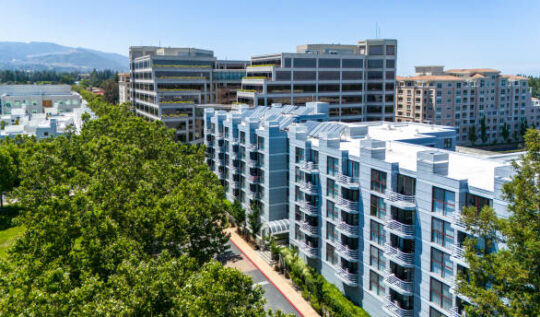Newsom Overhauls California Environmental Law to Speed Up Housing and Infrastructure Projects
Table of Contents
ToggleCalifornia Governor Gavin Newsom has signed major changes to the state’s environmental law, aiming to make it faster and easier to build housing and essential public projects. These changes are part of a broader plan to tackle California’s housing shortage and modernize infrastructure across the state.
Let’s dive into the recent CEQA reforms 2025..
What Changed in California’s Environmental Review Law?
Newsom’s CEQA reforms 2025 target the California Environmental Quality Act (CEQA)—a law that has been in place since 1970. CEQA was originally designed to protect the environment by requiring detailed reviews before major developments could move forward. But over time, it became known for long delays, costly lawsuits, and red tape that held back housing and infrastructure.
As part of this year’s state budget deal, two bills—AB 130 and SB 131—were signed into law. Together, they make several big changes to how projects are reviewed under CEQA.

Key Highlights of the CEQA Reforms 2025
Faster Approval for Urban Housing Projects
Housing projects in already-developed areas (known as infill housing) can now bypass lengthy environmental reviews—if they meet specific zoning rules and are under 85 feet tall. This could save months or even years in permitting.Exemptions for Public Benefit Projects
A wide range of projects now qualify for CEQA exemptions, including:Childcare centers and schools
Health clinics and mobile health units
Broadband internet infrastructure
Water and wastewater systems
Farmworker and affordable housing
Wildfire prevention work
Parks and open spaces
High-tech manufacturing in industrial zones
Reduced Power of Lawsuits
The new rules also limit what documents courts can use when hearing CEQA lawsuits. This is meant to cut down on frivolous legal challenges that have delayed projects in the past.
Why These Changes Matter
Supporters of the reform—including housing advocates, developers, and some local governments—argue that CEQA, while well-intended, has become a major barrier to housing production. Many believe the law has been abused to block or delay even small-scale projects.
Governor Newsom called this effort “the most consequential housing reform we’ve seen in modern history.” He also warned lawmakers that without serious changes, California’s budget and development goals could face major setbacks.
By streamlining reviews, the state hopes to:
Speed up affordable and market-rate housing
Build infrastructure faster and more affordably
Improve services in underserved communities
Pushback From Environmental and Labor Groups
Not everyone is happy with the new rules.
Several environmental justice groups say that removing CEQA reviews—especially for industrial or infrastructure projects—could put low-income and minority neighborhoods at risk. These communities often already face higher pollution, health issues, and noise.
Labor organizations have also raised concerns. While housing projects must still follow prevailing wage laws, some worry that new exemptions for manufacturing projects may leave workers without fair pay or strong protections.
Balancing Growth and Environmental Protection
The changes reflect a growing debate in California: how to build quickly and affordably without sacrificing environmental safety or public input.
For decades, CEQA has been the state’s most powerful tool for community review. But with rising housing prices, worsening homelessness, and aging infrastructure, lawmakers have been under pressure to act.
These new laws attempt to strike that balance—by keeping CEQA intact for larger projects while trimming it down for developments that meet environmental, zoning, and labor rules.
How California’s CEQA Reform Changes the Game in 2025
Before CEQA Reform
- Long delays for urban housing reviews
- CEQA applied to most infrastructure projects
- Lawsuits easily blocked developments
- Complex, costly permitting timelines
After CEQA Reform (AB 130 & SB 131)
- Fast-tracked urban infill housing (< 85 ft)
- Exemptions for key infrastructure projects
- Limited legal challenges under CEQA
- Streamlined permitting for qualified uses
What Projects Are Now Exempt?
What People Are Saying
Supporters
- “The most consequential housing reform in modern history.” – Gov. Newsom
- “Speeds up urgently needed housing approvals.”
Critics
- “Puts vulnerable communities at environmental risk.”
- “May weaken labor and wage protections.”
What Developers Need to Know
- ✅ Projects under 85 ft in infill zones get CEQA relief
- ✅ Many public infrastructure types are exempt
- ✅ Legal challenges are now harder to bring
- ✅ Labor and zoning rules still apply
What Comes Next?
These changes are now in effect. Developers, cities, and counties will begin using the new CEQA rules for qualifying projects.
It’s still unclear how fast the impact will be felt. The real test will be whether:
Housing approvals speed up,
Lawsuits decrease,
And essential infrastructure gets built faster.
Environmental and community groups may still challenge the reforms in court. Meanwhile, other states watching California’s struggle with CEQA may consider similar changes.
Final Thoughts
California’s new laws represent a major shift in how the state approaches growth. While there are risks, leaders hope the benefits—more homes, better services, and quicker approvals—will outweigh them.
This is not the end of CEQA, but a recalibration of the rules to match today’s urgent challenges. As the state moves forward, careful implementation and accountability will be key to making sure these reforms deliver on their promise—without harming the people or environment they aim to protect.
Related Reading
Gov. Newsom signs housing bill overhauling California’s landmark environmental law
California finally passed CEQA reform. Will it stop housing roadblocks?






California Housing Bills 2025 | JDJ Consulting Group Insights
July 17, 2025
[…] mid‑2025, Governor Gavin Newsom signed a sweeping package of housing reforms aimed at cutting red tape, speeding up permitting, and encouraging more infill […]